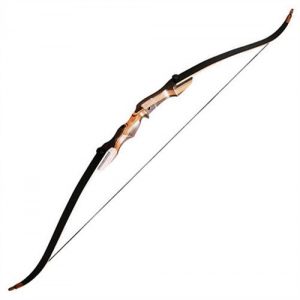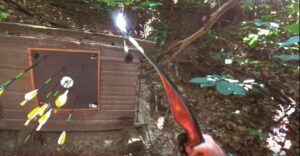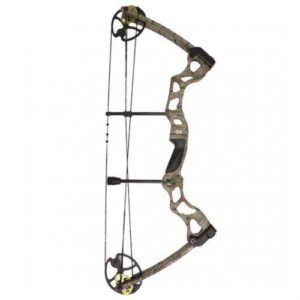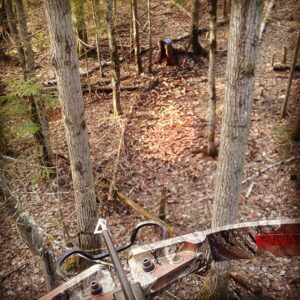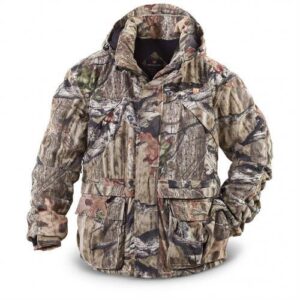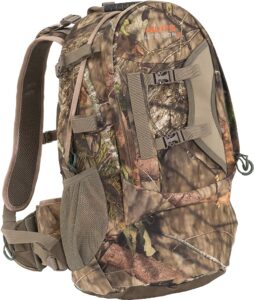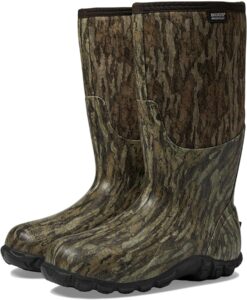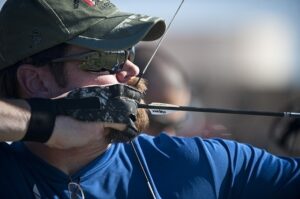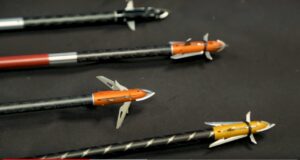Ultimately, there is a huge selection of recurve bows to choose from on the market today. As a result, it is easy to become overwhelmed when it comes to choosing the best recurve bow for you.
In the comparisons below and the recurve bow reviews throughout this website, it is not my goal to end by saying, “This bow is the absolute best and all others are inferior!”
Instead my objective is to present the top recent models with enough information to help you to choose the best one for YOU. Many factors go into your decision such as bow size, draw weight, price, whether or not you like the style and color, the technical specs, included features & equipment and so on.
Navigate [Show]
This site lists the top of the line bows alongside the under $250 models, as well as recommendations for recurve bows best suited for women and kids.
Please remember that the bows recommended and reviewed here are very much suitable for beginners as well as advanced archers, so we may or may not include all of the models listed by the major hunting and outdoors publications.
Those publications tend to list only the most expensive models (imagine that!) and those particular models may not be best suited to your particular needs and/or budget. So, the goal here is to give you a comprehensive list of the best recurve bows for the money and help you to make an informed decision on your new bow. As an added bonus, all of the bows we list on this site can be bought online, often at a discount.
Best Recurve Bow Reviews for 2021 – Your money is well spent with these
1. PSE Razorback- Good entry level bow
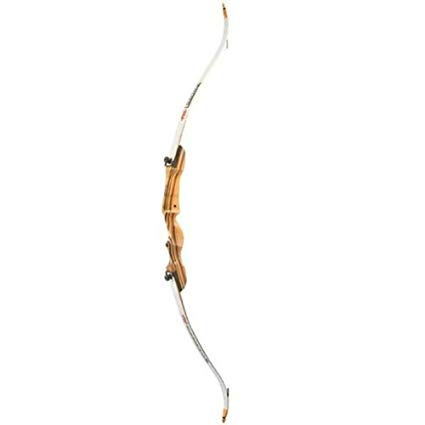
The PSE Razorback is the perfect starter bow for kids. This affordable recurve bow has a maximum draw weight of 30 pounds, making it an ideal choice for small-framed ladies and the youth as well. Designed for target shooting, this weapon can get you started with an interest in archery, as it is quite accurate and delivers ranges up to 30 yards. The riser has been pre-drilled to accommodate arrow stabilizers, a sight and a quiver along with other accessories.
The limbs of the recurve bow can be screwed on and unscrewed without the need for an Allen wrench. For the price, this bow is quite durable. The unit has a Berger button hole to take in a cushion plunger for your comfort. The limbs can be attached via the bolts on the bow. The bow also comes with assembly instructions plus a user’s manual and a warranty card to ensure optimal archery enjoyment.
2. Buffalo Hunting – Good looking and performing bow
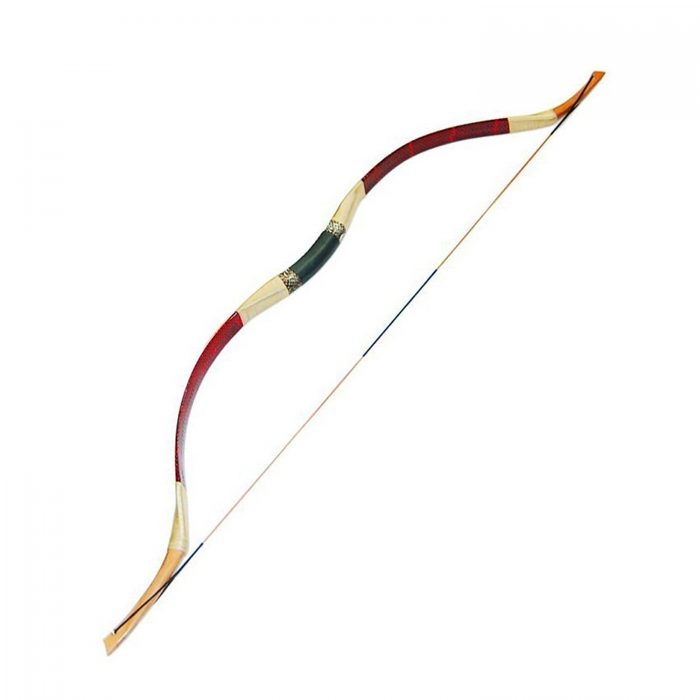
The Buffalo Hunting Recurve Bow boasts premium quality to ensure an enjoyable target practice and hunting experience every time. The bow is engineered with a draw weight of 30 to 65 pounds, perfect for target shooting. The uniquely designed bow has a draw length of 75 to 80 cm, or 29.5 inches to 31.5 inches, great for long draw archers. It can be used by both right-handed and left handed shooters and can accommodate different types of arrows. Providing exceptional balance, the recurve bow is dependable, durable and even comes with an attractive red cobra snakeskin cover that gives it a distinctive look.
Made by a company with around three decades of experience making bows and arrows, this model is handmade for fantastic customization. The package ships with a paper target plus a recurve arrow rest, so you won’t have to make too many additional purchases. The recurve bow/ horsebow/ longbow looks more expensive that it is so you can proudly wield it during your hunting trips.
3. Samick Sage – Best budget recurve bow
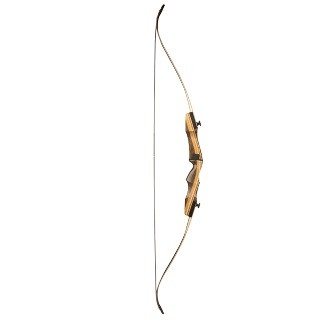
The Samick Sage is an entry-level bow targetted on beginners who don’t want to spend a fortune to get acquainted with shooting the bow and arrow. The samick sage is everything you would expect from an inexpensive bow and more.
One thing you will definitely like about this recurve bow is that it comes complete with a string and an arrow rest, which means that you will be able to save some money on accessories. Also, the model has pre-installed bushings for the plunger, as well as a stabilizer, a sight, and a quiver for your arrows.
You practically get a reasonable kit, for an unbeatable price. Another thing that will convince you that this is the recurve bow you should get is the quality of the limbs. Made from hard maple in a mix with fiberglass, they are lightweight, flexible, yet durable. The metal pockets will hold the limbs in place and contribute to the overall durability.
Furthermore, the fact that it is a takedown bow, provides even more value for a beginner because because the limps can be upgraded as you become more experienced and your strength is developed.
A wide range of draw weights to choose from and both left or right handed version ensures that you can buy the Samick Sage fully adjusted to your needs. The best use of the Samick Sage is target practice but it can be used for hunting as well, although more experienced hunters would propably prefer something a little more quiet.
This is an entry level bow that will also work for more advanced archers, due to its manageable design and sturdy build.
What we liked:
- The limbs are of good quality and lightweight
- It is a good pick for novices, as well as advanced users
- Complete with a string and an arrow rest is provided
What we didn’t like:
- Some users comment on the string having a short serving
4. Bear Archery Grizzly – Best recurve bow for target shooting
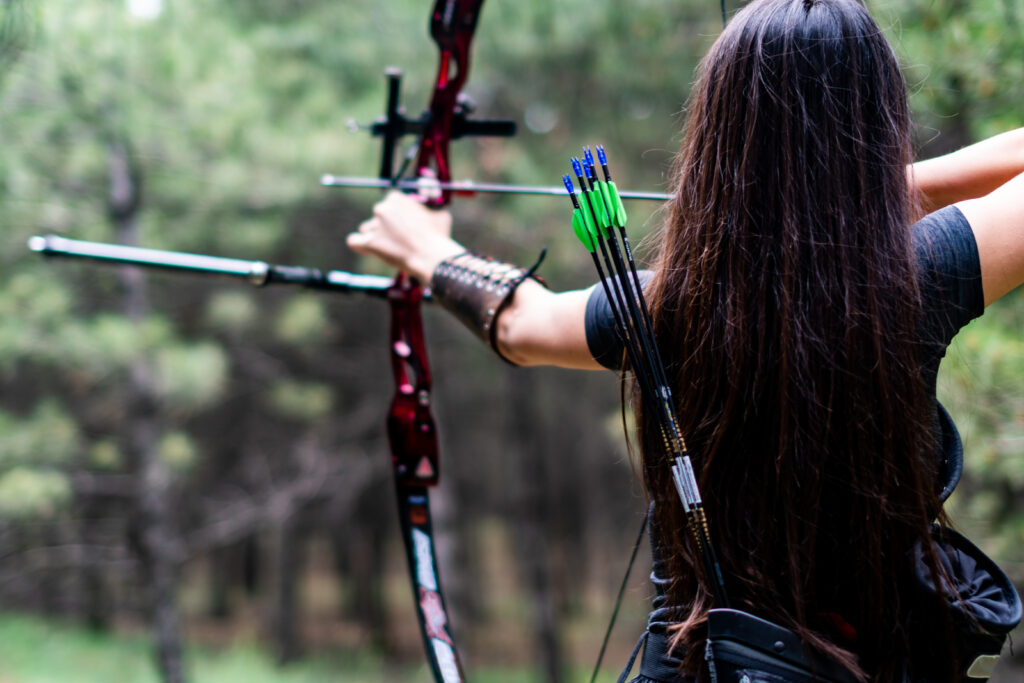
The Bear Archery AFT2086150 Grizzly is an excellent pick if what you have in mind is some target practice and even a hunting adventure. For the archer in you, it is a good choice if you are looking to hone your skills, and try getting yourself to the next level. If you are a beginner you will greatly appreciate its low weight (about 2lbs.) and if you are an experienced hunter you will be amazed by its supreme accuracy; an accuracy that even the most compound bows don’t have.
You will be able to send the arrows flying at superior speeds, and you will find it more manageable to hit the target than when using other bows. A great thing about this bow is that it can withstand all weather conditions, and you can take it along with you on trips to any location you may want. Moreover, the Bear Grizzly is perfect for those quiet hunting areas as you can barely hear it when releasing the arrow.
You will also find out that the limbs made from maple and fiberglass, are particularly resistant to wear and tear. If you pick this bow, you will get excellent value for the money. It comes equipped with all the needed accessories, and you won’t have to pay extra.
While not the cheapest bow to buy, the Bear Grizzly is surely one of the best. The quality of its built is on par with this of higher priced bows and so is its performance. Anyone willing to spend what’s needed for the Grizzly Bear should really consider buying it. Rest assured that it is second to none at this price range and maybe for more. If your budget is under $500 then the Bear Grizzly might the bow for you.
What we liked:
- The bow is lightweight, yet durable
- It can be used for hunting and target practice
- All the needed accessories are provided
What we didn’t like:
- While it is advertised as a choice for beginners, some novices might not find it so easy to use
5. Southwest Archery Spyder – Best Intermediate takedown bow
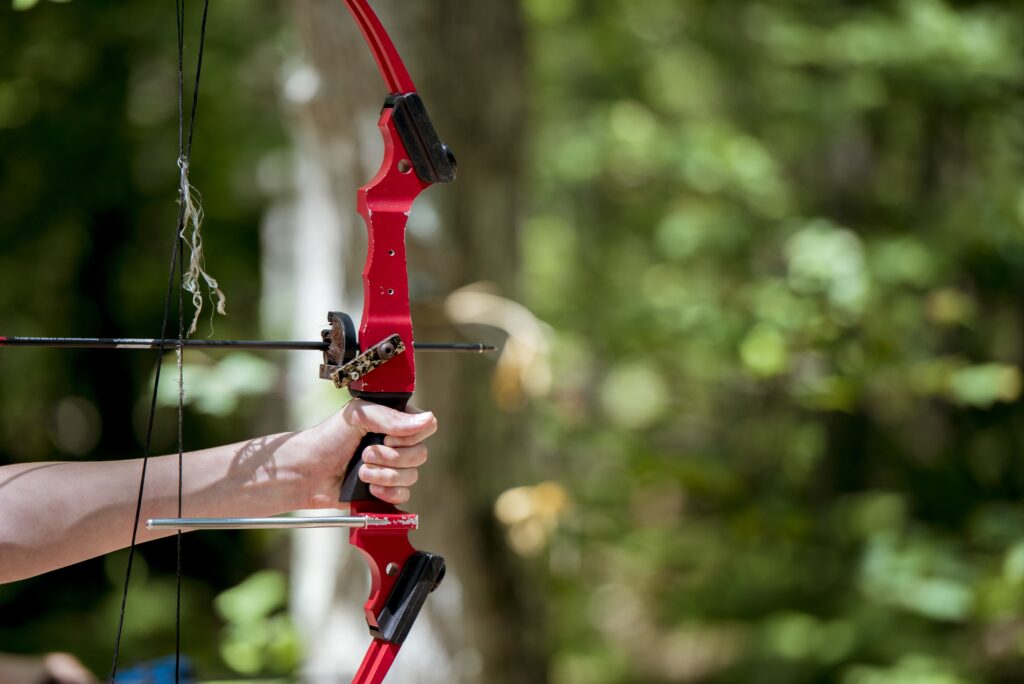
Are you looking to take up archery? The Southwest Archery Spyder Takedown might be just the thing for you. Created to withstand the mishaps and glitches associated with novice training, it has a mild learning curve, and it offers a genuine possibility for you to start learning how to use a recurve bow.
This model is available for both left-handed and right-handed archers. The draw weight varies between 20lbs and 60lbs, using increments of 5lbs. That means that you can easily pick that bow draw weight that you need to use it comfortably. One great thing about this bow is that it is compatible with both Flemish and Fast Flight strings for versatility.
You can use this bow for hunting deer, as well as for bowfishing. If you like, you can make use of it in target practice. One aspect that we want to mention is that the manufacturer can provide you with a stringer tool, should you decide to select the option.
What we liked:
- It’s a versatile recurve bow, easy to use
- You can use it with Flemish and Fast Flight strings
- It is lightweight and accurate
What we didn’t like:
- Unfortunately, it looks like the supplied string is not up to par, according to some reviewers
6. SAS Spirit – Best recurve bow for beginners
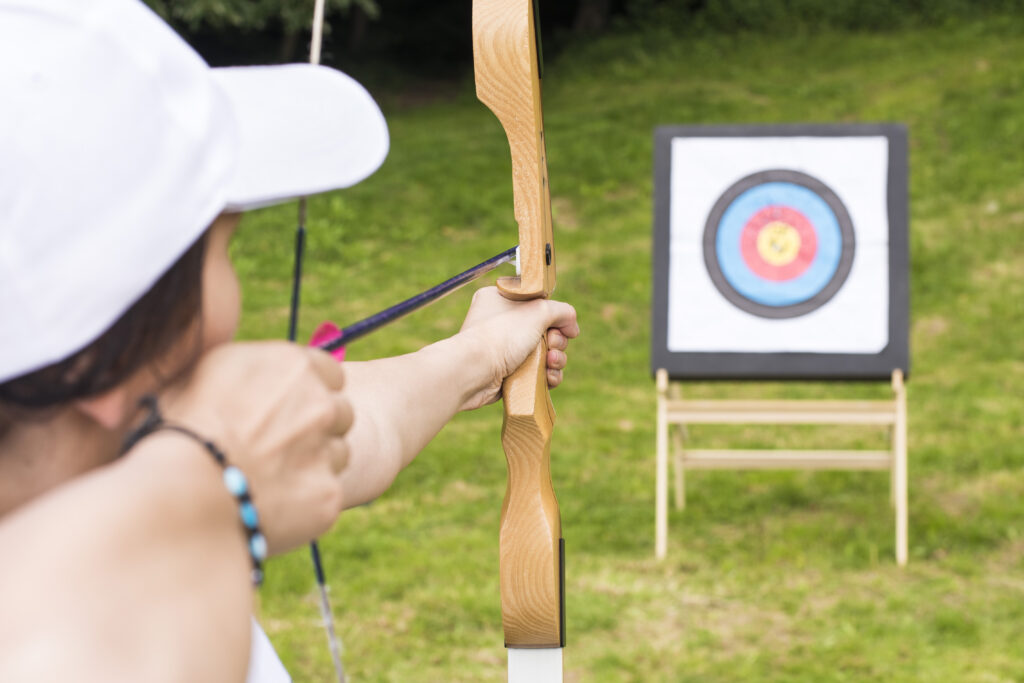
If you have been looking for a recurve bow to teach your kid how to use one, the Southland Archery Supply SAS Spirit offers an excellent starting point. Because it is lightweight, it is easy to hold even by children. The combination of maple and fiberglass in its construction also guarantees that the bow will take a bit of use without breaking.
Bear in mind that the archer’s maximum height should be six feet, which means that it is a great pick for a teenager growing up. You will find this model available for both left-handed and right-handed shooters, so there will be no issues picking the right version.
The draw weight goes from 22lbs to 34lbs with a few iterations in-between. While it may look like an option you should use only for target practice in the backyard, it is also reliable for hunting trips, as well.
What we liked:
- It is available in both right-hand and left-hand versions
- Excellent for kids growing up while learning to use a bow
- Decent versatility that can make it a good pick for hunting, too
What we didn’t like:
- One aspect that some reviewers noticed about this model is the poor quality string; a solution would be to replace it
7. SAS Explorer Metal Riser – Great bow for the money
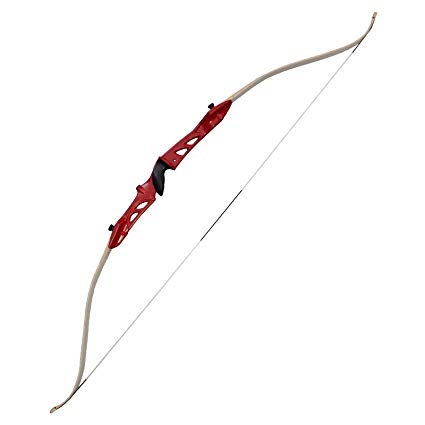
Are you looking for a recurve bow that is durable and flexible at the same time? The Explorer may be right up your alley. A good option for children who want to take up archery and join their parents on hunting trips, this model offers some significant advantages that cannot be overlooked. For instance, it comes with maple limbs.
This particular type of wood is famous for its flexibility and durability. Seeing that fiberglass is used for the construction of the bow, you can indeed count on it to be sturdy and serve your kid throughout years of practice. Ideal for teenagers, too, it is recommended for shooters up to six feet in height.
Another thing that we should mention in regards to the riser is that it is not made of wood, as it’s the case for many recurve bows, but of aluminum. That gives the model a bit more durability, and also the beautiful finish might catch your eye from the very first glance.
What we liked:
- Made of high-quality materials
- Great versatility for a shooter still growing
- No matter how much you bend it, you won’t be able to break it
What we didn’t like:
- It’s only available for right-handed use, which means that left-handed shooters will have to look somewhere else
8. Bear Archery Super Kodiak – Best recurve bow for hunting
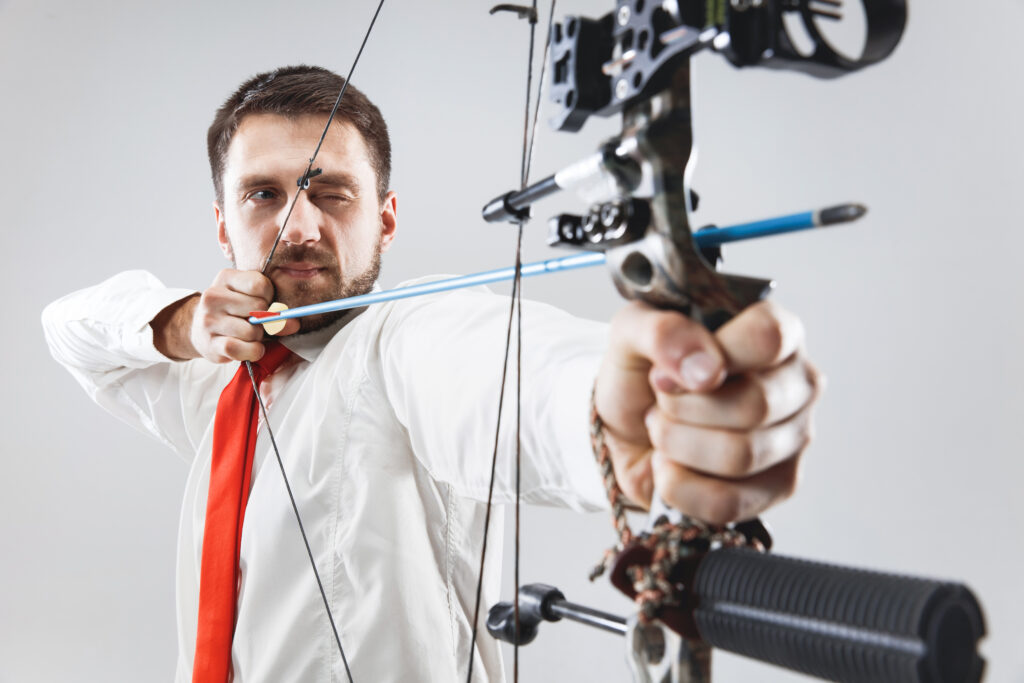
Everything about this bow spells quality, which is to be expected from a recurve bow that comes with a pretty high price tag. This 60-inch bow may not be the first choice for a beginner, but it represents an optimal pick for a more advanced user, as well as for a seasoned shooter. You will notice that every detail was carefully cared for, as you look at the overall build of the bow.
The arrow shelf comes with a patented Bear hair rest, and you may also observe the leather side plate, too. That is one aspect. Another is the dual riser made from black maple that is designed to ensure extra durability to this particular part of the bow.
Taking a look at the limbs will tell you everything you need to know. Made from maple, they are flexible, and they are reinforced with black fiberglass, to ensure numerous years of use. Its string is also of good quality, being Dynaflight 97 Flemish.
What we liked:
- Overall amazing build and quality
- Superior performance in every way
- Extra attention to details
What we didn’t like:
- While it is a beautiful recurve bow that will certainly do justice to the great shooter you are, it comes with a pretty hefty price tag, so not everyone can afford it
9. Southwest Archery Tigershark – Best takedown recurve bow
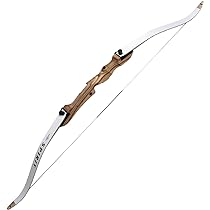
Most probably, the first thing that will catch your eye when you look at this recurve bow is how beautiful it is. The manufacturer uses four different types of wood to create this model, and that is not the only thing that will assure you of its superior overall quality.
Both left-handed and right-handed shooters will find a version that works from them, as the manufacturer carries this model in such variants. Another thing to learn about this model is that the draw weight can be adjusted between 25lbs and 60lbs, using increments of 5lbs. That grants plenty of versatility to this bow, and you will be able to customize its action so that it works for you.
As it comes with reinforced limb tips, you will be able to use it with either Flemish or Fast Flight strings. The PRO version comes with the pin-locking technology for precise limb placement.
What we liked:
- It is built with durability in mind
- The draw weight can be adjusted with ease
- You can install various accessories on it
What we didn’t like:
- It is a good thing that this model is compatible with both Flemish and Fast Flight strings, but the one it comes equipped with is of cheap quality
A Recurve Bow – Power In A Package
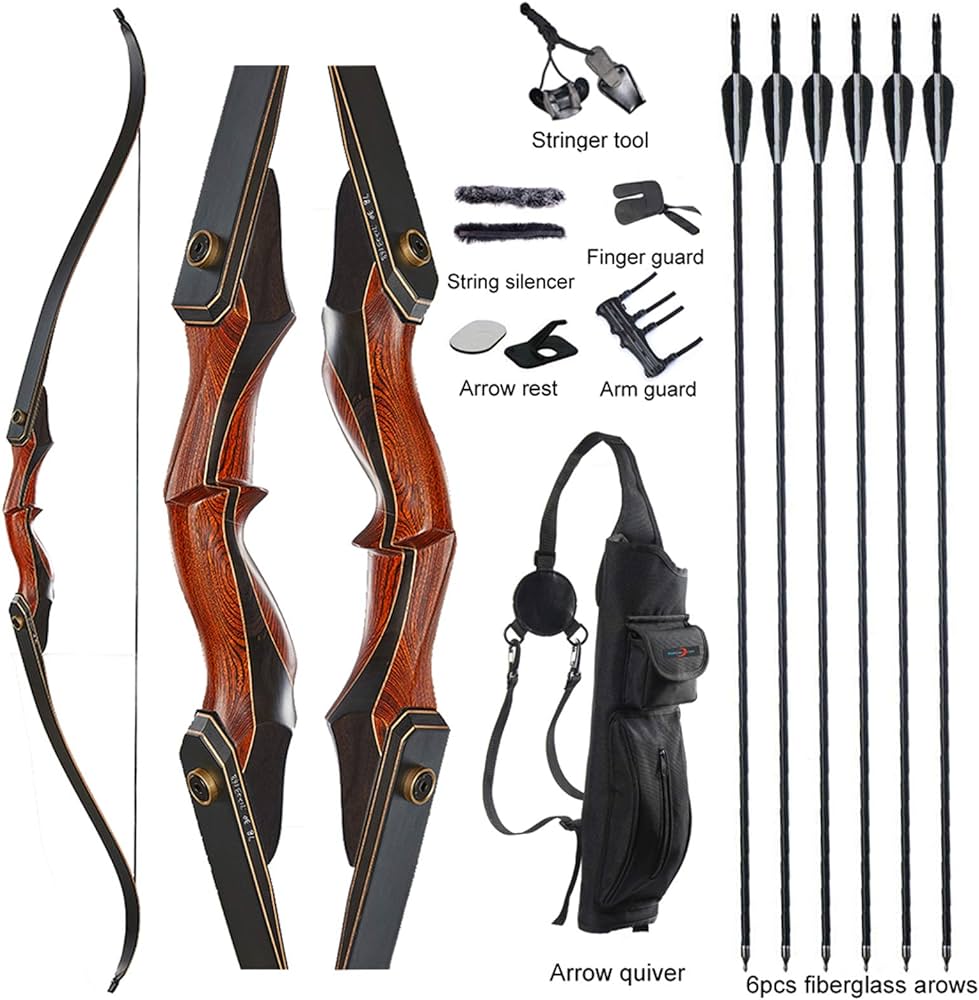
Bows and arrows have always been part of human history. Since the time when cavemen realized that they can throw their spears only as far as their strength will allow, strings were integrated in the equation to add force and strength to the velocity of the spear, which was later developed into an arrow.
The problem with this equipment is that the distance and strength of the arrow will depend on the length of the string. The longer the string, the longer the trajectory the arrow can take. The shorter the string, of course, the shorter the distance the arrow will travel. Now the length of the string dictates the length of the bow. Since the string should be properly stretched during rest position, the bow should be long enough to accommodate the same.
Imagine if you want to tackle a distance of 700 feet. Usually, you’d need a really, really, REALLY low bow, which can even be longer than your height.
Quite problematic, right?
Thankfully, recurve bows have been invented to deal with the problem. Basically they are bows with edges that curve outwards. Usually, the bow forms an arch, that when held by the archer, extends away from the body with the edges curving inwards. A recurve bow is build as such, as well, only, the edges do not stop their inward curves, instead, they curve outwards allowing for more drawing mileage for the strings.
The result? You have strings that can shoot the arrow at great distances and speed without necessitating a longer bow body. Hence, you’d have a more portable bow that is easier to wield.
It has since become the standard equipment for most archery competitions. In the Olympics, for example, only a recurve bow is allowed to be carried by the participant. This is the reason why most add-ons for archery bows are made with this type in mind.
This shouldn’t be taken to mean that it is only good for sporting competitions, however. Outdoor hunting likewise benefits from the things that a recurve bow brings to the table. Even if the game is many feet away, you won’t have to chug a long and hefty bow to ensure the right speed and trajectory. You’d have better chances of hitting your target with the flexibility that it allows while preparing for the strike.
1. Choosing the right recurve bow
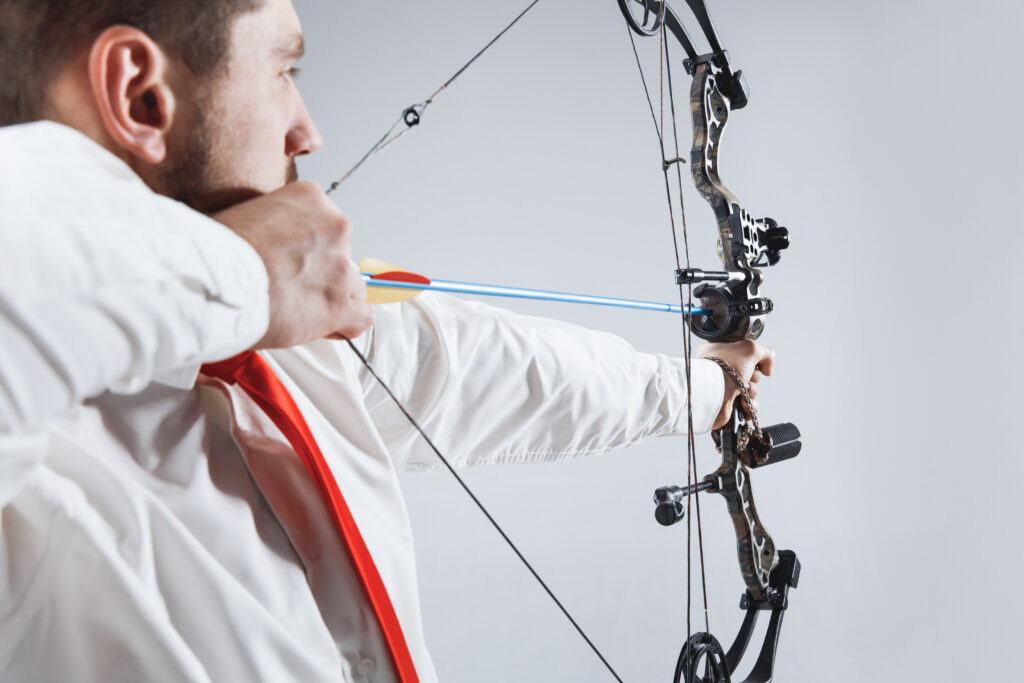
With limbs curved away from the archer when unstrung, a recurve bow can store a greater amount of energy and is thus able to utilize that energy more efficiently compared to a bow with straight limbs. The arrow flies faster and with more energy. Choosing the right recurve bow comes with knowing what to consider when checking out this kind of equipment.
Purpose
For target practice, any recurve bow will do fine, even those models for beginners. Choose one that suits your budget or that you personally like. You won’t need to wield an extra powerful bow for target practice since the arrow will just have to go through the cardboard or foam of the bullseye, and this won’t need a whole lot of energy to achieve.
For hunting, the arrow should be able to penetrate the animal’s thick skin and slip through fat tissue and even the bone of the game animal as well. Any recurve bow with a draw weight ranging from 40 pounds and up will be great for hunting purposes. There are a lot of options on the market for recurve bows in the 40 pounds and higher range. For shooting targets, just about any recurve bow will do, but when you’re shooting game, such as deer, elk and turkey, a draw weight of 40 to 45 pounds is ideal. When things heat up with larger game, such as buffalo, oxen or bears, you will want the security of wielding a recurve bow with 55 pounds or more draw weight.
Suitable Draw Weight and Draw Weight
When choosing the perfect recurve bow for you, it is necessary that you figure out what draw weight you are most comfortable working with. The draw weight denotes the amount of force needed to draw the bow correctly and fully. Principally, you will have to consider your age, gender and body weight, along with any physical disabilities or limitations you may have. Beginner archers can build up more strength with time, so they may need to think about their own progressive development instead of being stuck with just body weight as a primary determinant.
Generally, it is recommended that children weighing less than 100 pounds first pick up recurve bows having draw weights between 10 and 15 pounds. A draw weight of 25 to 35 pounds should serve well for females with small to medium build. Males with average height should be able to handle draw weights from 40 to 55 pounds.
A draw weight from 40 to 60 pounds may be just what larger men want. To shoot game, you will need nothing lower than 40 pounds, which ensures effective shooting at a safe distance. Should this figure be greater than your recommended range, first go for a draw weight that you can handle comfortably and then work your way from there.
Your draw length refers to the length of your arm span in inches, which is measured from the tip of one middle finger to another with your arms outstretched to both sides and palms facing forward, and then divided by 2.5. Peg your draw length at a reasonable range, since too much will affect your shooting accuracy, form, comfort and safety during shooting. This will also allow arrows to be trimmed to the proper length to complement your shooting gear.
Recurve Bow Characteristics and Accessories
Aside from draw weight, the recurve bow’s actual weight should also be considered. Most solid recurve bows weigh in at 2 to 3.5 pounds, which is a safe starting point for beginners. Bow weight is not as important as draw weight though, so there’s no pressing need to focus on it. The length of the bow should be twice as long as your draw length, so if your draw length is 27 inches, you need to get a recurve bow 54 inches or something reasonably longer.
It may take a bit of trial and error to pick the right arrows for you. It is not a huge issue when you pick the wrong arrows on your first try. Start out with decent-feeling arrows and after your skill grows, you could choose just the right arrows for you. There are many factors aside from the shooting distance and your experience that could affect the arrows’ reponse to your bow.
Recurve bow packages mostly come with a bare minimum of accessories, which may only include the bow and string. However, many models ship with more than that. Fortunately, you could always make separate purchases for the essential components for your shooting system, which should include a bow stringer, arrows and field tips, nocking points, and archery targets for practice. Items such as an arm guard, finger tabs, arrow rest, bow string wax and a broadhead wrench can be bought later but they will still go a long way to ensuring long term comfort and bow durability. A quiver, string whisker and a sight are not absolute necessities but should ensure a simple and enjoyable shooting experience.
2. Choosing the right draw length for your recurve bow
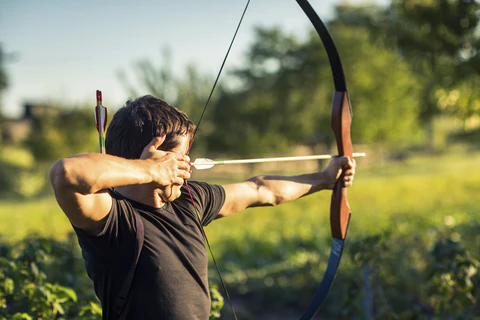
Choosing the right draw length for your recurve bow is as important as choosing the perfect pair of shoes for you. The process may not be extremely difficult but your success at archery depends on being able to get the draw length correctly. No matter what kind of bow you have, it is important to measure correctly for a suitable draw length for you, as this also helps you find out the right size and length of arrows you can use as well as the size of your bow. You do not simply choose a bow and then fit yourself to it, but you have to fit the bow to your body if you are to shoot consistently.
Elements that influence your draw length
When measuring for proper draw length, the top of your shoulders and your bow arm should be correctly aligned. Make sure your shoulders are not in a shrugging position but in a low, natural position. These two elements will ensure that you can get a draw length that isn’t shorter than your actual one. To ensure that the draw length you get won’t be longer than your actual, your neck and head shouldn’t be straining backward while measuring, so just keep them relaxed.
Make sure not to hold the string at an anchor point too far back. Make sure your release aid doesn’t lengthen your draw either. Observe good posture when measuring and make sure the wrist of your drawing hand is not arched or strained. Don’t use your back muscles when measuring as this will push your entire shoulder toward your spine, giving you a falsely long measurement.
Beginner archers should not attempt to take their draw length by themselves. It is best to work with a coach or pro-shop expert who can help you measure your draw length properly using a practice bow and a measuring arrow. Remember to stand in good form and alignment during the process.
Why measure your draw length at all?
No matter how your archery instructor tells you that there is just one position animal stance, all archers have to accept that we are, each and everyone of us, unique. While some people have longer or shorter arms than average in relation to their chest, others have smaller forearms and slightly longer fingers as well. When using recurve bows, a draw length or bow size that is too small will make it impossible for the archer to assume proper archery shooting form.
How to measure draw length
With both arms outstretched to your sides and your palms facing outward or to the front, measure from one middle finger to the next. This will be your arm span. Then, divide that measurement by 2.5. Another way is to subtract 15 from your arm span and then to divide the difference by two. The number you get from these methods will be pretty close to an accurate measurement. You will probably want to simply take the average measurement between the two methods and use that number instead of just relying on just one method.
Another way to measure draw length is to take a yardstick that you place one end of on your chest, at the point just down your throat. Extend your arms as far out as you can, like you were clapping your hands in front of you. Mark the reading you get at the very end of your middle finger and add an extra inch to that to get your rough draw length.
3. Choosing the proper size for your recurve bow
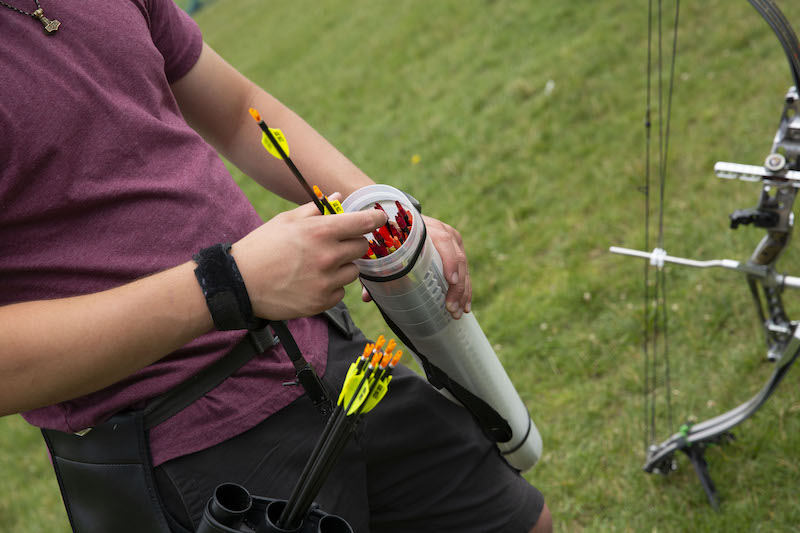
Getting the proper bow size for your recurve bow shouldn’t be like learning rocket science. Recurve bows come in various lengths and you should not choose a weapon that is extremely long or too short for you, as it will affect your shooting accuracy. You want a properly sized recurve bow to prevent physical pain, costly loss when you miss your target, and an altogether frustrating experience during use.
It is incorrect to assume that people of the same height have the same draw length. There is no evidence to prove that your arm span is equal to your height. People with the same height will not have the same arm lengths, and neither are their fingers of the same length. In addition, your age does not determine the proper bow size for you. Age may be used as a guiding factor but it is not a primary element to consider in determining correct draw length, mainly because of the same reason mentioned before this. Thinking that people of the same age have the same draw length is just like believing that recurve bows are one-size-fits-all pieces of equipment.
How can you take your draw length? Stretch both your arms to their respective sides of the body at shoulder level, with your palms facing front. Do this in a relaxed manner without stretching. Have someone else measure the distance between one of your middle fingers to the other middle finger. Divide the number you get by 2.5. Another way is to subtract 15 from the number you obtain there and divide the result by 2. Now, you have your calculated draw length, which will be quite close to your actual draw length. To make doubly sure, just get the average between the two calculation methods and you would pretty much reduce any huge difference between the two. Round off your calculated draw length to the nearest half inch.
If you want to be all technical about it, you can just use the Archery Trade Association (ATA) method for taking the true draw length. The true draw length refers to the distance between the nocking point of the bow string to the pivot point of the bow grip at your full draw, plus an extra 1 ¾ inches. This is obtained by drawing the bow to the proper anchor position then having a friend measure from the nock grove or the apex of the string to the bow grip pivot point. Just add 1 ¾ inches to the number you get and you should have your proper bow length. Some websites provide a table for draw length and the matching bow size for that specific measurement. You can simply refer to the information given in those sites to make things easier, but it is always better to know how to arrive at an approximate measurement on your own.
It is vital that you are able to get a reasonable measurement for your bow length since going too short will not give you the accuracy level you need for shooting. Going too long, on the other hand, will cost you speed and overall bow performance. Aside from draw length, you also need to determine the proper draw weight for your recurve bow. This component varies from one archer to another and can be affected by the individual’s physical strength, stamina and coordination. A draw weight that’s too heavy will cause you to develop poor shooting habits that can be very hard to correct down the road.
4. Shooting a recurve bow
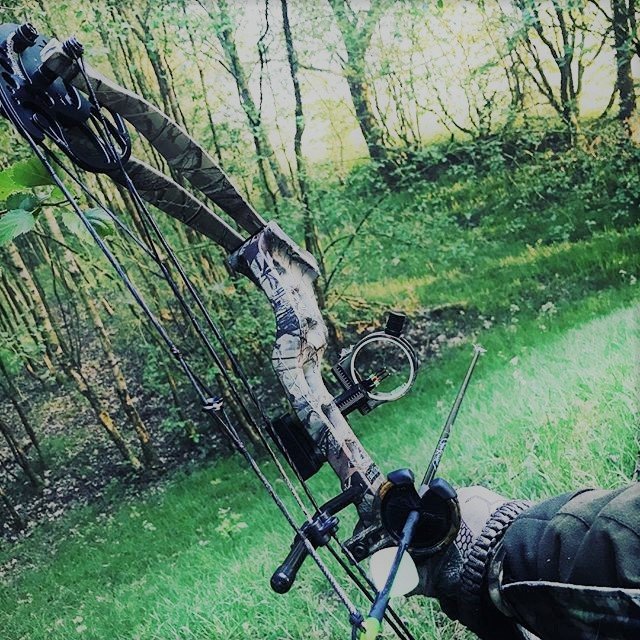
Assume the proper stance or position. Stand with your legs positioned apart at a distance that matches the width of your shoulders, and your whole body, your hips and torso placed perpendicular to the target. Right-handed shooters should stand with the left hip pointing toward the target, while left-handed individuals should stand with the right hip pointing toward the target. Make sure to have one foot on either side of the shooting line. For right handed shooters, the target is to the left, and for left-handed archers, it is to the right. Keep your body vertical, with your dominant side foot slightly ahead of the other foot and at 45 degrees to the shooting line.
Your head should be turned toward your target so you can look at the target directly. Keep your body perpendicular to the target at all times. Keep your shoulders down and your chest in, and do not hunch your shoulders. Take an arrow, seat it on the arrow rest, nock it and lift the bow to shoulder height. Do not draw the string when you nock your arrow. Make sure your bow arm is straight and locked to your elbow so that when you release the bowstring, your arm is safely away from it. A bent elbow will also make it difficult for you to draw the bow. Tuck the pinky and ring fingers of your bow hand to the palm of that hand to make a gun shape. Push into the bow grip with the inner part of your palm, or the pad of flesh just below your thumb. Keep your knuckles at 45 degrees to the ground. All the knuckles of your bow hand should be visible to you.
Use a comfortable yet firm grip to hold the bow. Fortunately, most recurve bows come with handles so you won’t have to figure out by yourself where to hold the weapon. Relax the wrist of your bow hand. Do not use a death grip to hold the bow, as this can result in loss of accuracy for shooting. It is best to stay relaxed to ensure smooth movement all the way.
Now, for your tab hand, your fingers should form a hook, with your index finger above the arrow and the middle and ring fingers below the projectile. The pinky finger of your tab hand should be relaxed towards the palm of that hand. For your anchor point, the top of your index finger and the platform of the tab should be placed along your jaw. Draw the bowstring to the center of your nose. When you draw back, make sure not to twist your torso to face the target. Make it a habit to allow the stronger muscles on your back to carry out most of the work when you draw the bow. Do not let your arm muscles do most of the job.
Use your dominant eye when aiming while keeping the other eye shut. Using your dominant eye for aiming ensures greater reliability for hitting the target. If your recurve bow is equipped with a sight or scope, use the notches in the device to help you line up the target. Check your aim with your eyes. When you are sure that your arrow is pointing correctly at the target, you are ready to release the bowstring.
To release the string, let it simply slide out of your fingers. Do not release it abruptly nor jerk it suddenly. The action of releasing the bowstring should be smooth and like simply relaxing the fingers that hold the string anchored. Allow the bowstring to just slide out with a smooth motion and drive the arrow to the target. If you pull on the string or jerk it before you release it, there is a huge likelihood that the arrow will fly jerkily, not straight.
Once you release the string, your tab hand should end up behind your neck. Your bow arm should remain solid until after the arrow has hit the target. As long as possible, stay unmoving after you release the bowstring and till the arrow hits the target, because a jerk of the body as soon as the bowstring is released could affect arrow trajectory on a negative level.

